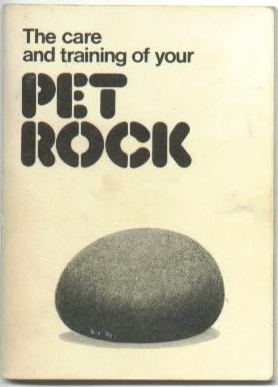 As I always say, if you can't beat 'em, re-publish 'em - with the proper sourcing, of course :) With a career that has focused deeply on product (management, marketing, development), I'd like to think I'm quite the connoisseur of the finest of writings on such topics. Below is a terrific set of questions for getting you out of your box and into your mind's innovation lab. The questions were first published in an HBR article in December 2007. Enjoy.
As I always say, if you can't beat 'em, re-publish 'em - with the proper sourcing, of course :) With a career that has focused deeply on product (management, marketing, development), I'd like to think I'm quite the connoisseur of the finest of writings on such topics. Below is a terrific set of questions for getting you out of your box and into your mind's innovation lab. The questions were first published in an HBR article in December 2007. Enjoy.21 Great Questions for Developing New Products
“De-average” buyers and users
- Which customers use or purchase our product in the most unusual way?
- Do any customers need vastly more or less sales and service attention than most?
- For which customers are the support costs (order entry, tracking, customer-specific design) either unusually high or unusually low?
- Could we still meet the needs of a significant subset of customers if we stripped 25% of the hard or soft costs out of our product?
- Who spends at least 50% of what our product costs to adapt it to their specific needs?
Explore unexpected successes
- Who uses our product in ways we never expected or intended?
- Who uses our product in surprisingly large quantities?
- Look beyond the boundaries of our business
- Who else is dealing with the same generic problem as we are but for an entirely different reason? How have they addressed it?
- What major breakthroughs in efficiency or effectiveness have we made in our business that could be applied in another industry?
- What information about customers and product use is created as a by-product of our business that could be the key to radically improving the economics of another business?
Examine binding constraints
- What is the biggest hassle of purchasing or using our product?
- What are some examples of ad hoc modifications that customers have made to our product?
- For which current customers is our product least suited?
- For what particular usage occasions is our product least suited?
- Which customers does the industry prefer not to serve, and why?
- Which customers could be major users, if only we could remove one specific barrier we’ve never previously considered?
Imagine perfection
- How would we do things differently if we had perfect information about our buyers, usage, distribution channels, and so on?
- How would our product change if it were tailored for every customer?
- Revisit the premises underlying our processes and products
- Which technologies embedded in our product have changed the most since the product was last redesigned?
- Which technologies underlying our production processes have changed the most since we last rebuilt our manufacturing and distribution systems?
- Which customers’ needs are shifting most rapidly? What will they be in five years?

Check out my favorite business books
.jpg)







